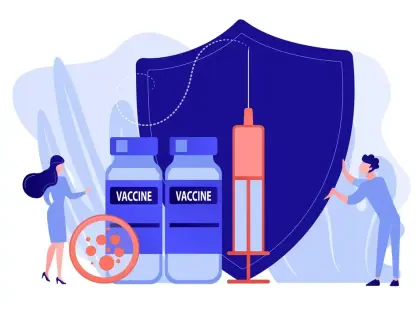As Pasadena moves forward into Fiscal Year 2026, city officials face the complex task of crafting budgets designed to stimulate economic growth amidst persistent financial constraints. The significance of this endeavor is underscored by the city’s commitment to boosting tourism, supporting local businesses, and enhancing workforce development. Budget proposals from key entities like the Pasadena Center Operating Company, Pasadena Community Access Corporation, and Economic Development Division are being scrutinized closely by the City Economic Development and Technology Committee. Each organization must navigate decreases in funding, tax revenue shortfalls, and increasing costs while maintaining sustainable growth.
Strategies in Tourism and Convention Facilities
Opportunities and Obstacles in Revenue Generation
The Pasadena Center Operating Company, responsible for managing the city’s prominent tourism and convention facilities, is forecasting a 3.7% revenue increase despite facing challenges such as a projected shortfall in the Transient Occupancy Tax. This shortfall is juxtaposed against a temporary demand surge spurred by local events. To confront these challenges, the company is emphasizing strategic advertising and partnerships, especially focusing on major events like the 2026 FIFA World Cup. These efforts aim at optimizing facility usage to maximize revenue despite external pressures.
The strategic approach involves maximizing Pasadena’s hospitality appeal, thus attracting more visitors and event organizers. By distinguishing itself as a desirable destination for major conventions and sporting events, such as the FIFA World Cup, the city can combat fluctuating tax revenues and solidify its status as a host city. Additionally, fostering connections with regional tourism developers may enable Pasadena to fuel growth while enhancing local culture and allure.
Steps Forward: Advertising and Strategic Partnerships
Efficient advertising campaigns are pivotal in creating visibility for Pasadena’s convention facilities. The city is investing in sophisticated marketing techniques that target global audiences, especially those linked to international events. Well-strategized promotional efforts promise not only to improve immediate bookings but also forge long-term relationships between venues and organizers. Concurrently, strategic partnerships with corporate sponsors and event planners can pave the path for resource sharing, logistical support, and financial incentives—critical for thriving in uncertain fiscal climates.
Forging alliances with local businesses and authoritative tourism entities fortifies Pasadena’s capacity to lure high-profile events. Collaborative partnerships often provide financial backing while enriching community ties, ultimately ensuring that growth is distributed and sustainable. These collective efforts require synchronized coordination, thus establishing Pasadena as a competitive contender in the bustling hospitality landscape.
Community Engagement and Media
Financial Stability and Outreach Enhancements
In parallel, Pasadena Media, operating under the Pasadena Community Access Corporation, projects financial stability with revenues holding at $1.225 million despite a notable 10% decline in PEG funding. The corporation plans to mitigate these financial impacts by advancing community engagement and facilities through strategic training programs, facility improvements, and innovative outreach models. By aligning with its comprehensive five-year strategic plan, Pasadena Media aims to reinforce its role as a critical platform for community interaction and broadcasting.
This initiative places the spotlight on improved accessibility, creating opportunities for residents to engage directly with community-driven broadcasting initiatives. By fostering an environment conducive to dynamic content creation, Pasadena Media not only enriches local narratives but also encourages civic participation. Training programs targeted at improving media literacy empower citizens to voice their perspectives, thus nurturing democratic dialogue within the community.
Aligning With Strategic Plans
Strategic planning becomes indispensable in fortifying the role of community media amidst tightening budget constraints. By aligning engagements and objectives with a clear strategic roadmap, Pasadena Media ensures effective resource allocation that promotes growth without compromising quality. Facility upgrades, modern equipment provisions, and enhanced user experiences propel outreach efforts, encouraging active participation.
The commitment to transparent governance and detailed strategic initiatives will guide operations and investments towards fulfilling community aspirations. With sustained training efforts, the corporation ingrains a culture of learning and proactive development. Engaging local government, educators, and businesses can catalyze new content, accelerating growth while reaffirming collective accountability.
Local Business and Workforce Development
Business Resilience Strategies
Anticipating an 11.7% budget increase, the Economic Development Division prioritizes the enhancement of local businesses via marketing campaigns and reward programs. By spotlighting Pasadena’s support mechanisms, the city underscores its commitment to business resilience amidst looming economic adversities. The focus remains on delivering innovative campaigns that highlight the diverse opportunities available for businesses, effectively bridging gaps caused by external financial pressures.
Strategic reward programs are intended to stimulate employee performance and retention alongside encouraging new hires—a crucial aspect of sustainable business growth. Incentives can revitalize existing business practices by allowing enterprises to optimize productivity while fortifying partnerships with local entrepreneurs. Targeted marketing, meanwhile, fosters awareness regarding economic incentives and infrastructural developments, attracting statewide investment.
Addressing Workforce Needs
In stark contrast to the planned budget increases in economic development, the Foothill Workforce Development Board faces a challenging 16% budget cut prompted by expired grants. The board is striving to maintain workforce resilience through targeted educational training and enduring partnerships with local educational institutions. Collaborative training initiatives prepare workers for evolving industry demands and ensure sustained employability within highly competitive job markets.
Creating pathways for skill development through partnerships enhances adaptability among workers, reducing the impact of budget cuts. Fostering alliances with educational bodies guarantees that job seekers can access requisite skills training, positioning them favorably for a competitive labor market. This results in the creation of robust networks that facilitate continuous learning while safeguarding workforce integrity against economic shifts.
Strategic Initiatives and Future Outlook
Collaborative Plans for Economic Health
Overall, the comprehensive budget presentations underscore Pasadena’s strategy for ensuring economic stability and growth amidst fiscal constraints such as reduced funding. They highlight a steadfast commitment to promoting tourism, enhancing community engagement, and advancing workforce interactions through strategic collaborations. Intentional investments and aligned partnerships present avenues to explore long-term prosperity despite financial hurdles.
Pasadena’s approach to navigating fiscal challenges with shared objectives and collective accountability provides insightful lessons into the management of public funds. Strategic planning centered around collective action fosters resilience and adaptability within essential service sectors. The full City Council will soon review these proposals, emphasizing their importance in financial planning and thereby highlighting the potential for success.
Approaches to Consider Going Forward
As Pasadena prepares for Fiscal Year 2026, city officials face the challenging task of developing budgets aimed at stimulating economic growth in an environment marked by financial constraints. This undertaking is critical as the city focuses on enhancing tourism, supporting local businesses, and advancing workforce development. Budget proposals from significant organizations, including the Pasadena Center Operating Company, Pasadena Community Access Corporation, and the Economic Development Division, undergo thorough evaluation by the City Economic Development and Technology Committee. These entities must adapt to decreased funding, tax revenue shortfalls, and rising costs, all while pursuing sustainable growth. Amid these difficulties, officials emphasize innovation and strategic planning to ensure the city’s economic vibrancy and resilience. This process involves collaborating with community stakeholders, exploring new revenue sources, and maximizing existing resources. The aim is not only to overcome fiscal challenges but also to create a more robust economic foundation for Pasadena’s future.









